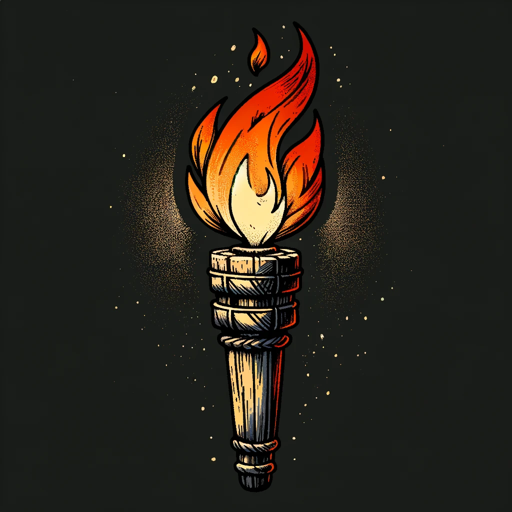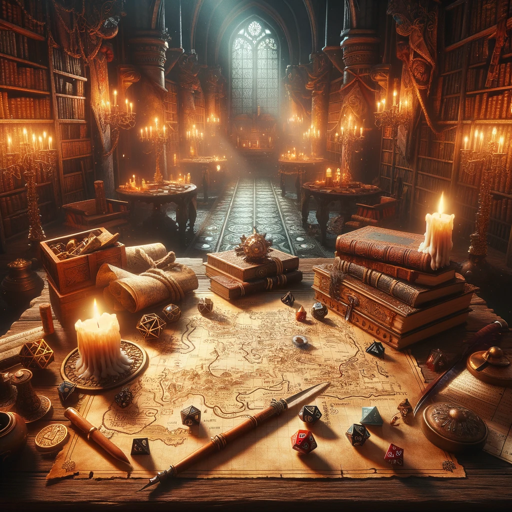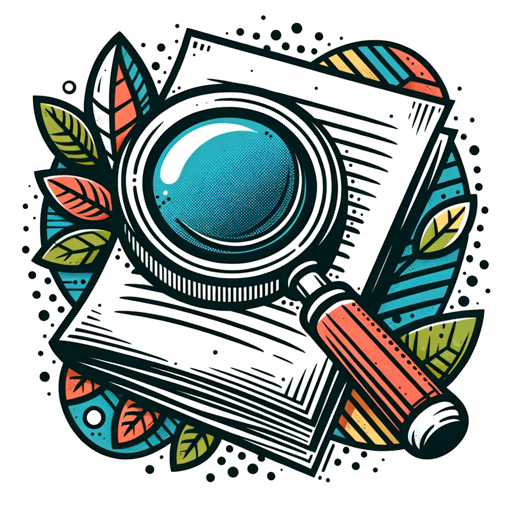Dungeon Forge-AI-powered D&D content generator.
AI-powered D&D content creation tool.
Create a dungeon.
Generate a campaign.
Design a one-shot.
Build a dungeon.
Related Tools
Load MoreDungeon Adventure Engine RPG
Your personal adventure roleplaying game without boundaries

Dungeon Architect
Expert in D&D (Dungeons and Dragons or Dnd) gameplay, narrative, character, item, encounter creation, and campaign advice utilizing templating for ready to use results.

Dungeon Crafter
Assistant for creating immersive DND 5E content

Dungeon Crawler
Guide players through a dynamic, ever-changing RPG dungeon.

EPIC DUNGEON MASTER - Fantasy Builder Edition
Become the architect of epic D&D adventures with Fantasy Builder Edition! Design intricate dungeons, forge legendary heroes, and craft breathtaking narratives. Unleash challenges and twists to shape a thrilling campaign. Transform your game night!"

Dungeon Master
Play Dungeons and Dragons with your very own AI Dungeon Master | Prompt "lets start our adventure" to get started and feel free to ask it for any images you wish to see along your journey!
20.0 / 5 (200 votes)
Introduction to Dungeon Forge
Dungeon Forge is a specialized tool designed to aid Dungeon Masters (DMs), worldbuilders, and Dungeons & Dragons (D&D) enthusiasts in creating and managing campaigns, settings, and adventures. It is designed with the goal of simplifying and enhancing the process of creating immersive and balanced content for tabletop role-playing games (RPGs), primarily focused on D&D 5th Edition (5e). Through its features, Dungeon Forge assists users in crafting intricate worlds, designing custom creatures, generating complex storylines, and organizing rules, mechanics, and gameplay strategies. The platform leverages structured tools, suggestions, and templates to support the design process, enabling users to develop content quickly while maintaining creative control. For instance, a DM could use Dungeon Forge to create a fully fleshed-out town with NPCs (non-player characters), quests, and dynamic environments. The tool can also provide prompts for environmental effects or conflicts to add depth to encounters, thus saving the DM time while still offering rich gameplay elements.

Core Functions of Dungeon Forge
Worldbuilding and Campaign Design
Example
Dungeon Forge enables users to build entire worlds or specific campaign settings, including maps, factions, cultures, and histories. These features can be used to design continents, cities, or even small villages, complete with lore, politics, and conflicts.
Scenario
A DM is preparing a homebrew campaign and uses Dungeon Forge to create the backstory of a multi-kingdom region. The platform helps the DM craft intricate lore about the kingdom’s leadership, major trade routes, and ongoing conflicts, all while tracking the relationships between different political entities.
NPC and Monster Creation
Example
Dungeon Forge offers tools to generate both NPCs and monsters, including stats, abilities, and personalities. Users can design fully custom creatures or tweak existing ones, ensuring they fit their campaign’s theme or challenge level.
Scenario
During a session, the party decides to investigate a mysterious forest not initially planned by the DM. Using Dungeon Forge’s monster creation tool, the DM quickly creates a dangerous fey creature with custom abilities tied to the forest’s mystical energy, ensuring a dynamic and memorable encounter.
Encounter and Adventure Generation
Example
Dungeon Forge helps create detailed encounters and adventure hooks, offering tools to organize challenges, puzzles, and exploration elements. It provides the structure needed for balanced encounters, taking into account party level and composition.
Scenario
A DM is running a one-shot adventure and uses Dungeon Forge to create three varied encounters: a puzzle-heavy exploration of ancient ruins, a combat sequence against a mercenary group, and a negotiation scene with a rival faction. Dungeon Forge provides the necessary structure to ensure each encounter fits the theme and flow of the session.
Target Users of Dungeon Forge
Dungeon Masters (DMs) and Game Masters (GMs)
DMs and GMs are the primary users of Dungeon Forge, especially those who run D&D campaigns or other tabletop RPGs. Dungeon Forge’s tools help them streamline campaign preparation, design custom monsters and NPCs, and organize world lore. DMs who prefer homebrewed content over pre-written modules would benefit most from the worldbuilding and customization options.
Aspiring Worldbuilders and Storytellers
Aspiring worldbuilders looking to create deep, intricate settings and narratives would find Dungeon Forge’s tools helpful for organizing and expanding their ideas. Whether they’re building a fantasy world for a campaign or creating lore for writing projects, Dungeon Forge offers structure and inspiration through its lore generation and map design tools, ideal for those who need guidance or templates.

How to Use Dungeon Forge
Step 1
Visit aichatonline.org for a free trial without login, no need for ChatGPT Plus.
Step 2
Once on the website, explore the available tools to generate and refine D&D 5e content, from custom encounters to in-depth campaign guides.
Step 3
Use Dungeon Forge’s content customization options to create unique items, characters, or scenarios. Adjust parameters like difficulty, class abilities, and lore relevance.
Step 4
Save, export, or copy generated content directly into your campaigns. Dungeon Forge allows for easy integration into digital platforms and manual setups.
Step 5
Utilize advanced features like encounter balancing, homebrew creation, and lore generation. These features enhance immersion and simplify session planning.
Try other advanced and practical GPTs
Practice English Conversation - (Voice)
AI-Powered English Conversation Practice

RedBub Product Assistant
AI-powered tool for Redbubble artists.

Redbubbled - Creative Assistant
AI-powered design assistant for Redbubble creators

Redbubble Helper
Boost your Redbubble sales with AI-driven content optimization.

Code Wizard App Script
Automate Google Workspace tasks effortlessly with AI

GAS & GCP Pro
Enhance Google Apps with AI Power

Professore di Filosofia
Explore Philosophy's Depth with AI.

Miracle Sports Predictor (기적의 스포츠 승부 예측)
AI-Driven Sports Predictions at Your Fingertips.

English Explainer
AI-Powered English Explanation and Breakdown

chemistry
AI-driven insights for chemistry mastery

GPT Finder
Discover the perfect AI tool for any task

Next.js, Supabase, Shadcn, and Tailwind Developer
AI-powered web app development.
- Character Creation
- World Building
- Campaign Management
- Game Mastering
- Homebrew Design
Dungeon Forge Q&A
What is Dungeon Forge primarily used for?
Dungeon Forge is designed to assist Dungeon Masters in creating and customizing content for Dungeons & Dragons 5e campaigns, offering tools for encounters, character creation, item generation, and more.
Does Dungeon Forge require a subscription?
No, Dungeon Forge provides free access without requiring a subscription. Users can try its features at aichatonline.org without the need for ChatGPT Plus.
Can Dungeon Forge help with world-building?
Yes, Dungeon Forge has tools that support world-building, from creating detailed NPCs and quest lines to generating lore that fits the campaign’s setting.
Is Dungeon Forge only for D&D 5e or other TTRPGs?
While optimized for D&D 5e, many of the content generation tools in Dungeon Forge can be adapted for use in other tabletop role-playing games with some customization.
What are some advanced features of Dungeon Forge?
Advanced features include encounter balancing, automated stat block creation, custom item design, and pre-built adventure frameworks to accelerate campaign development.